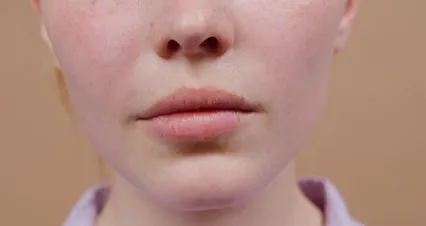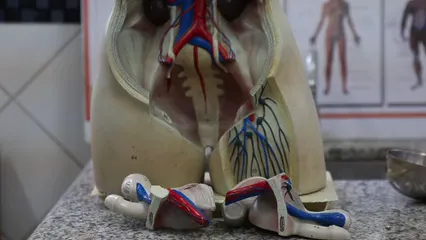Why Do Some People Have Dimples?
Introduction
Dimples—those delightful little dents on the cheeks—have a charm all their own. In many cultures, these indentations are seen as signs of beauty, youth, and even good luck. It’s almost as if they bring a sprinkle of magic to a smile! But what causes dimples? Why do some people sport these cute features while others don’t? This article aims to unpack the genetic, anatomical, and cultural aspects of dimples. We’ll explore the science behind them and dive into their significance across different societies. By the end, you’ll better understand why some individuals have dimples and others are left wondering what it’s like to have that adorable grin. If you’re feeling a bit envious of those cute dimples, fear not! You can create the illusion of dimples with a Cheek Dimples Makeup Kit. It’s perfect for those moments when you want to channel your inner dimpled diva!Understanding Dimples
What Are Dimples?
Dimples are small indentations typically seen on the cheeks, but they can also appear on the chin or lower back. About 20-35% of the population has cheek dimples, making them more common than you might think. In fact, a study revealed that nearly one in five people has this charming trait. Culturally, dimples are often associated with beauty and youthfulness. In some societies, they are viewed as attractive, adding to a person’s charm. It’s no wonder that many people aspire to have them!Types of Dimples
- Cheek Dimples: The most recognizable type, cheek dimples often appear as small hollows on either side of the mouth. They tend to deepen when a person smiles, pulling on the skin and creating that endearing look. These dimples are often linked to genetic traits and can accentuate facial expressions, making smiles even more captivating.
- Chin Dimples: Also known as cleft chins, these Y-shaped indentations result from the incomplete fusion of the lower jaw during development. Unlike cheek dimples, chin dimples are usually singular and can give a person a distinctive appearance.
- Back Dimples: Often referred to as the “dimples of Venus,” these alluring indentations are located just above the buttocks. They form due to a short ligament attaching the hip bone to the skin, creating a captivating effect that many find attractive.

The Science Behind Dimples
Genetic Factors
Dimples are often regarded as a charming feature, but their presence primarily stems from genetics. Specifically, cheek dimples are considered a dominant genetic trait. Essentially, if one parent has dimples, there’s a strong chance the child will inherit this endearing characteristic. Research indicates that if one parent possesses dimples, the offspring have about a 25% to 50% chance of acquiring them. If both parents have dimples, that likelihood increases drastically, soaring to between 50% and 100%. This genetic trait isn’t just a random occurrence. Families often pass down dimples through generations. For example, there are families where siblings, parents, and even grandparents sport similar dimpled grins. Imagine a family reunion where everyone is grinning, and the dimples are like a signature stamp of charm! It’s like a dimpled dynasty, where the cuteness factor runs rampant. However, not every family has this dimple legacy. Some children may pop out with dimples even when neither parent has them, thanks to spontaneous genetic mutations. It’s a bit like winning the lottery, where you might just get lucky with a dimple! Interestingly, the rarity of dimples can also make them feel special. In a world where trends come and go, dimples remain a timeless feature, often associated with youth and beauty. So, if you’ve got them, wear them with pride! They’re a little genetic gift that adds character to your smile.Anatomical Formation
Now, let’s shift gears and peek behind the curtain at the anatomical side of dimples. The zygomaticus major muscle plays a pivotal role in creating those adorable cheek dimples. This muscle is responsible for lifting the corners of our mouths when we smile. In individuals with dimples, this muscle can split into two bundles, known as the bifid muscle. When you smile, the skin moves over these muscle groups, leading to the charming indentations we adore. But wait, are dimples a birth defect? Not quite! While some folks might casually label them as such, they are generally regarded as a normal genetic variation. They arise from a simple difference in muscle structure and are harmless. Think of it this way: if dimples were a birth defect, they’d be the cutest one out there! It’s fascinating how such a small change can result in a feature that so many people find appealing. After all, who hasn’t seen a smile with dimples and thought, “Wow, that’s adorable!” Whether they deepen when you laugh or appear only when you smile, dimples have a way of brightening up our faces and making us more approachable. In summary, dimples are the delightful result of a genetic trait and a unique muscular structure. They’re not just a feature; they’re a legacy, a story that connects us through generations, and a charming addition to our smiles. So, if you’re lucky enough to have them, embrace those dimples—after all, they make for one extraordinary smile!
Variability and Transience
Dimples are often seen as a charming feature, but their appearance can be quite the rollercoaster ride! Many infants are born with the adorable indentations, thanks to the baby fat that plumps up their cheeks. However, as they grow and that baby fat fades away, those cute dimples can sometimes vanish too. It’s like a magical disappearance act! But it’s not just baby fat at play. The visibility of dimples can also be affected by facial fat distribution. Imagine a person who has cheek dimples that shine like stars in the night sky when they smile. As they age, the facial structure changes. Fat can redistribute, and voila! Those once-prominent dimples might fade away, leaving behind a smooth canvas. Aging can be tricky, right? Interestingly, some individuals may develop dimples later in life. Yes, you heard that right! As people lose weight or go through certain facial changes, dimples can make a surprise appearance. It’s a phenomenon that leaves many scratching their heads. One day, a person is dimple-free, and the next, they’re grinning with those delightful indentations! So, whether they appear, disappear, or pop up when least expected, dimples have a mind of their own. They add a unique twist to facial aesthetics, reminding us that beauty comes in all forms—and with a bit of unpredictability!Cultural Perspectives on Dimples
Dimples in Different Cultures
Dimples hold a special place in the tapestry of global beauty standards. In various cultures, these small indentations are often viewed as symbols of charm and attractiveness. For instance, in many Asian cultures, cheek dimples are considered a sign of good luck and beauty. It’s as if they carry a sprinkle of fortune with every smile! Meanwhile, in some Western societies, dimples enhance perceptions of youthfulness and approachability. They can make a person appear friendlier, leading to the belief that dimples are a ticket to social success. Who wouldn’t want a smile that lights up a room, right? In parts of Africa, dimples can be revered as a mark of beauty, with many believing they add character to a person’s appearance. People with dimples might even be seen as more attractive in dating scenarios. Talk about a dimpled advantage! But it doesn’t stop there. The perception of dimples has made its way into pop culture, with celebrities flaunting their dimples and contributing to fashion trends. The charm of dimples transcends borders, creating a shared appreciation for this unique feature.
The Desire for Dimples
Dimples have a magnetic charm that many people find irresistible. They’re not just cute; they often symbolize beauty and youth in various cultures. As a result, countless individuals yearn to have these adorable indentations. Some people might even go the extra mile and seek cosmetic procedures to achieve the dimpled look. Enter dimpleplasty, a nifty little surgical option for those wishing to have dimples without the genetic lottery. This procedure creates a permanent dimple by making a small incision inside the cheek. A stitch is then placed to pull the skin inward, forming that coveted indentation. It’s a quick outpatient procedure, typically taking only about 30 to 45 minutes. Recovery is relatively simple, with minimal downtime. The popularity of dimpleplasty has surged as more people embrace their unique appearance. After all, who wouldn’t want a smile that lights up the room? If you’re considering this option, it’s wise to consult a comprehensive Cosmetic Surgery Consultation Guidebook to ensure you make the right choice for your dimple dreams! For many, dimples are more than just a physical trait; they represent individuality and charm. Whether through nature or surgical enhancement, the pursuit of dimples reflects a broader desire to celebrate the quirks that make us unique.
FAQs
Common Questions About Dimples
Are dimples hereditary?
Dimples are often a family affair! They are inherited as a dominant genetic trait. If one parent has dimples, there’s a good chance their child will too. Research shows that the likelihood is about 25% to 50% when one parent has them. If both parents sport dimples, the odds increase significantly, with children having a 50% to 100% chance of inheriting this charming feature. However, it’s worth mentioning that sometimes dimples can pop up in children without any family history. These spontaneous mutations are like the genetic lottery—unexpected but delightful!
Can dimples disappear with age?
Ah, the mystery of aging! Dimples can indeed play hide and seek as we grow older. Many infants are born with cheek dimples thanks to that adorable baby fat. But as they age and lose that plumpness, dimples may fade into oblivion. Additionally, weight changes can affect visibility. If you gain weight, your dimples might become more pronounced due to extra cheek fat. Conversely, as the years roll by, skin elasticity can decrease, making those once-prominent dimples less noticeable. It’s a classic case of “out with the old, in with the new!”
Can you get dimples through surgery?
Yes, you can! For those who didn’t win the dimple lottery, there’s always dimpleplasty. This cosmetic procedure creates permanent dimples. Here’s how it works: A small incision is made inside the cheek, and the surgeon stitches the skin to the underlying muscle. This technique ensures the dimple appears when you smile. The procedure takes about 30 to 45 minutes and typically requires minimal recovery time. Just think—one day you’re dimple-free, and the next, you’re rocking a charming smile that could rival a movie star!
What are the different types of dimples?
Dimples come in several varieties! The most common are cheek dimples, those adorable indentations that form when you smile. Then there are chin dimples, also known as cleft chins, which create a Y-shaped indentation on the chin. Lastly, we have the alluring back dimples, often referred to as the “dimples of Venus.” These beauties are located just above the buttocks and are created by a short ligament connecting the hip bone to the skin. Each type of dimple adds its own unique flair to a person’s appearance!
Do dimples have any health implications?
Good news—dimples are generally harmless! They are simply a result of variations in facial muscle structure and do not indicate any health issues. So, if you have dimples, rejoice! You have a cute feature that adds charm to your smile without any underlying health concerns. They’re like nature’s little gift, bringing joy to both the wearer and those lucky enough to see them!
How rare are dimples on both cheeks?
Having dimples on both cheeks is a delightful rarity! Studies indicate that about 20% to 35% of the population sports cheek dimples, but fewer individuals have them on both sides. The prevalence varies, with some suggesting that having a single dimple is more common, particularly on the right cheek. It’s like finding a four-leaf clover—those with dimples on both cheeks are fortunate indeed!

Conclusion
In conclusion, dimples are a fascinating blend of genetics and anatomy, often seen as charming traits that enhance one’s smile. They result from variations in the zygomaticus major muscle, creating indentations that can be passed down through generations. Approximately 20-35% of the population is lucky enough to have them, and for those who don’t, options like dimpleplasty exist to fulfill that desire.
Embracing individuality is vital, and dimples are just one of the many unique features that make us who we are. So, whether you have them naturally or decide to get them through surgery, appreciate these delightful indentations! They add character to our smiles and remind us that beauty comes in many forms. Celebrate your uniqueness, whether with dimples or without! If you’re looking for beauty tools to help you maintain that youthful appearance, consider exploring a Skin Care Products for Youthful Appearance. Because who doesn’t want to glow like they just walked out of a beauty magazine? Please let us know what you think about our content by leaving a comment down below! Thank you for reading till here 🙂If you’re curious about the reasons behind why some people have dimples, check out this article on Why do some people have dimples.
All images from Pexels




